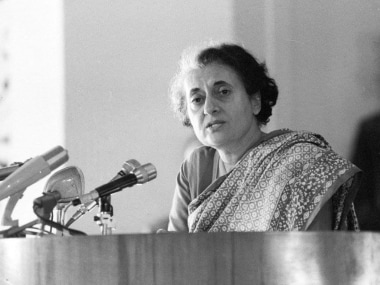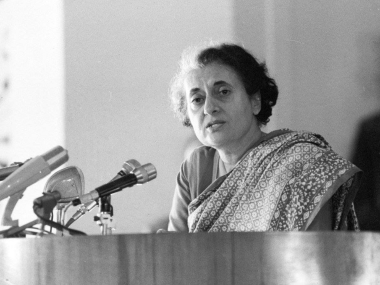Editor’s note: This is the third article in a three-part series on the 50 years of nationalisatation of banks and the negatives that emerged post-bank nationalisation. On 20 July, 1969, The Times of India’s front page carried two major news developments—Indira Gandhi nationalising 14 banks and Apollo entering Lunar orbit preparing for the first-ever human landing on the moon. Both were landmark developments—one for the Indian banking landscape and the other for the world. The bank nationalisation happened through a formal ordinance within an hour after Morarji Desai exited the Union government. Fifty years have passed since the first round of bank nationalisation by Indira Gandhi. Some 14 banks were nationalised on 1 July, 1969 which was followed up with six more a decade later, in 1980. The nationalised banks had clear monopoly in the sector till the first set of bank licenses were issued to private banks by the Reserve Bank of India (RBI) to introduce competition in the sector. This was in 1993-94, when licenses were given to Global Trust Bank Ltd, ICICI Bank Ltd, HDFC Bank Ltd, Axis Bank Ltd, Bank of Punjab, IndusInd Bank Ltd, Centurion Bank Ltd, IDBI Bank Ltd, Times Bank and Development Credit Bank Ltd. Post-this, more licenses were given to commercial banks and a new set of lenders—payments banks and small finance banks. Even after all this, government banks continue to be the majority in the banking sector constituting 70 percent of assets and having an unenviable record of about 90 percent of the non-performing assets (NPAs) in the industry. [caption id=“attachment_5633651” align=“alignleft” width=“380”]  Indira Gandhi. File image. Reuters[/caption] After 50 years, critical questions arise on the mega exercise begun in 1969. Was bank nationalisation a mistake by Indira Gandhi’s government or a revolutionary step that helped millions of the unbanked masses? Should it be undone now or should these banks be kept alive ? Bank nationalisation, originally intended to take banking services to the country’s far-flung villages, was the first-ever reform the Indian banking sector witnessed and probably the biggest mistake for it, too. It paved the way for the growth of a group of inefficient entities, perennially prone to corruption, political manipulations and frauds.
Yes, nationalisation certainly helped India push agricultural credit and other forms of directed lending to certain sectors, besides advancing government schemes sans any questions. But, these entities never learnt to fend for themselves. Sovereign support made them complacent and never exposed them to existential worries like their private counterparts. These banks competed only with each other to appease their political bosses and were trained to approach the North Block with begging bowls every year for survival capital.
Prime Minister Narendra Modi, who is into the second term of his government, isn’t a big fan of nationalised banks. Modi once said Indira Gandhi’s bank nationalisation programme was a drama played by the then Congress government to ‘cover up’ the sacking of Morarji Desai. The claim that nationalisation was done to serve the poor wasn’t fulfilled ultimately, Modi was quoted as saying. It is a fact that most of the NPA build-up in state-run banks occurred during the Congress rule. This was when the government banks completely forgot about prudent lending practices and found themselves vulnerable to the infamous corporate-political nexus. Loans were freely given away to the likes of Vijay Mallya’s Kingfisher Airline while bankers themselves were unsure about the financial health of the borrower and the ability to repay the loan. Such lending continued for a long period until the boom period lasted. Along with the accumulation of this troubled chunk, when the economic cycle turned, banks faced the heat. This prompted state-run banks to evergreen the loans (technically retaining bad loans as standard loans on the book) on a large scale. Each and every outgoing bank chairman passed the burden to his/her successor, which is the reason why banks showed a big hit on their net earnings after making hefty provisions. The then UPA government largely remained a mute spectator. Hence the Congress leaders, who were part of the government, are answerable for the banking sector crisis today. To be sure, the Modi government, too, woke up late to address the problem. In the initial years, it didn’t pay much attention to the capital needs of the state-run banks or kick off radical reforms to address the systemic problems in the sector. The RBI began action on the NPA problem only in 2015 when it spelt out stricter rules to banks regarding early recognition of assets and punitive provisioning rules for the lenders who do not go in for swift resolution of problematic assets. Most of the large NPA cases involving wilful defaulters (people with the ability to repay but wouldn’t) were either stuck at overburdened debt recovery tribunals (DRTs) or various other courts. By the time legal resolution took place, the underlying assets lost value, like in the case of Kingfisher Airlines, leaving nothing much for the banks to recover. But, when, in May 2016, Parliament passed the bankruptcy law, Insolvency and Bankruptcy Code, 2016 (IBC), it was seen as the first solid step in the direction of resolution of stressed assets. Subsequently, the RBI sent two lists of companies to banks to initiate bankruptcy proceedings. These steps largely takes care of the resolution of large NPAs. Later, the government amended the insolvency act to prohibit tamed promoters (wilful defaulters/ habitual loan defaulters) from bidding again on their assets. The IBC has changed the nature of loan recovery process in the sector although there are still certain hiccups for faster resolution. To cut a long story short, the Modi government has been largely in the right direction as far as banking reforms are concerned, compared with the UPA regime. But, the one important area missing so far is a firm intent to privatise public sector banks. Maybe the time has come now to for outright privatisation of majority state-run banks. On Friday, former Union minister, Jairam Ramesh said in Parliament that the Modi government should not privatise government banks considering the work these banks have done over the years for India’s unbanked population. Ramesh indeed has a point. Bank nationalisation has indeed helped improve access to formal banking for the poor in far-flung areas in the country. The private sector banks have largely limited their operations to urban centres. But, Modi is right in saying that the progress has not been as swift as it should have been in the years that followed bank nationalisation. If these nationalised banks have failed to deliver, the reasons can be traced to excessive government control, resultant lack of autonomy and absence of professional managements. The short point is that If Modi is convinced that Indira Gandhi’s bank nationalisation policy was drama, then this is the time for him to undo the drama and let these banks compete in a free market. (Some parts of this piece had earlier appeared in Firstpost) Read the other articles in this series here: Part 1: Spread of public sector banks paved way for balanced economic development, large-scale job creation Part 2: Govt can continue to own banks, but management must be made professional


)
)
)
)
)
)
)
)
)



